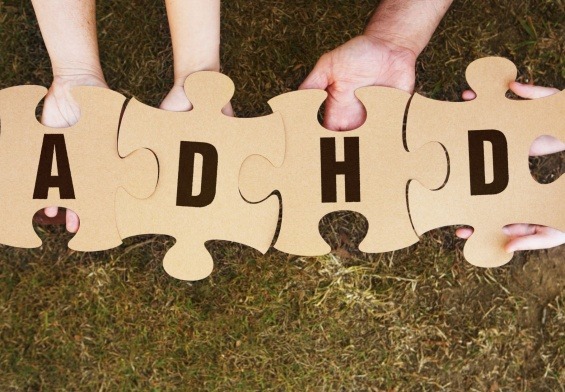As a parent, a childhood ADHD diagnosis can send you spiraling. You might be under the impression it results from too much screen time or poor discipline. But the science behind ADHD proves that’s not the case.
Decades of scientific research show that attention-deficit/hyperactivity disorder is a neurodevelopmental disorder. It’s rooted in brain structure, genetics, and neurotransmitters. Studies from the CDC, NIH, and PubMed confirm that ADHD reflects measurable differences in how children’s brains develop and function. None of that is caused by your parenting.
Quick Answer: What Causes ADHD in the Brain?
ADHD is a neurodevelopmental disorder caused by differences in brain development and neurotransmitter balance, not behavior or environment. Research from NIH and PubMed shows delayed maturation in the prefrontal cortex and cerebellum, with dopamine and norepinephrine imbalances affecting focus and motivation. Heritability estimates of 70–80% confirm ADHD’s strong genetic and biological roots in children.
Understanding Childhood ADHD: What It Really Is and How It Affects Kids
ADHD in children is one of the most common neurodevelopmental disorders, affecting about 9.4% of U.S. kids between ages 2 and 17. It disrupts attention, impulse control, and self-regulation. These skills depend on maturing brain circuits. Far from a behavioral issue, ADHD brain development follows a slower timeline that influences how kids focus and respond.
Experts classify ADHD into three types: inattentive, hyperactive-impulsive, and combined. Each reflects how executive-function networks in the brain connect and communicate. For many children, ADHD is best described as “a delay, not a deficit” in the brain’s regulation systems.
In simple terms, how ADHD affects the brain comes down to pacing. The mental “control panel” responsible for focus and decision-making develops slower than other children. Short attention spans and inconsistent follow-through during school or play are the results.
If you’re trying to navigate early signs or overlapping symptoms, see our guide on ADHD vs. Autism: Similarities, Differences, and Why Girls Are Often Misdiagnosed.
How ADHD Affects the Brain: Structure, Growth, and Function
Recent ADHD neuroimaging studies have revealed that ADHD brain differences are consistent and measurable. A major meta-analysis found that several regions show delayed growth or reduced gray-matter volume, particularly in the prefrontal cortex, basal ganglia, cerebellum, and limbic system
| Brain Region | Typical Role | Observed Difference in ADHD | Effect on Behavior |
| Prefrontal Cortex | Planning, impulse control, focus | 2–3-year maturational delay; smaller gray matter | Weaker organization and impulse control |
| Basal Ganglia | Reward processing, habit formation | Reduced connectivity | Trouble maintaining motivation |
| Cerebellum | Coordination, timing | Developmental lag | Poor time management and coordination |
| Limbic System | Emotional regulation | Altered amygdala-frontal pathways | Heightened frustration or emotional swings |
These ADHD brain structures still mature correctly, they just take longer. Over time, many children’s attention networks catch up through therapy, medication, and natural growth.
Functional MRI and ADHD neuroimaging research also highlight reduced communication between the default mode network (DMN)—responsible for daydreaming—and the task-positive network (TPN) that focuses attention. In ADHD, these systems often overlap. That’s why kids’ minds “wander” even during structured tasks.
Dopamine, Norepinephrine, and ADHD: What’s Really Happening in the Brain
Under the surface, ADHD reflects chemical differences in key neurotransmitters. The two main players—dopamine and norepinephrine—control reward, motivation, and alertness.
- Dopamine and ADHD: Studies show higher dopamine-transporter density in ADHD brains, meaning neural pathways clear dopamine too fast. This weakens the reward response and makes sustained attention more difficult.
- Norepinephrine: Helps regulate alertness and working memory. When levels are low, children experience fatigue, distractibility, and trouble prioritizing tasks.
- How treatment works: Stimulants like methylphenidate block dopamine and norepinephrine reuptake. That boosts signal strength in the prefrontal cortex. Non-stimulants such as atomoxetine boost norepinephrine levels more gradually, balancing focus and calmness.
Think about dopamine as the brain’s Wi-Fi for motivation. If the signal drops, tasks stop feeling rewarding. Medication, exercise, and structure help stabilize this connection, enabling smoother focus.
Is ADHD Genetic? What Research Says About Family and Heritability
Genetic research demonstrates that ADHD is highly heritable, with studies estimating a 70–80% genetic contribution. Family data show siblings of affected children are up to nine times more likely to share the diagnosis.
According to NIH researchers, gene activity patterns in the frontal cortex and caudate nucleus, shape ADHD brain development. These differences alter how brain cells communicate through dopamine, glutamate, and other neurotransmitters.
ADHD is polygenic, meaning there’s no single “ADHD gene”. Instead, hundreds of small variations influence brain wiring and chemical signaling. Some genes affect dopamine transport (DAT1, DRD4). Others guide neuron growth and connectivity. Even rare DNA deletions or duplications—known as copy-number variants—appear more often in ADHD populations.
Scientists are also exploring epigenetics in ADHD, the study of how environment and experience can change gene expression, but not the DNA itself. Factors such as nutrition, stress, or prenatal exposure may alter how key genes linked to attention and emotional regulation are “switched on” or “off.”
Although ADHD in children originates in genetics, environment still shapes how these genes express themselves. Diet, sleep, and stress can influence gene activity without rewriting DNA.
Environmental and Developmental Factors That Influence ADHD in Children
While genes write the blueprint, the environment determines how the plan unfolds. Researchers agree that environmental influences don’t cause ADHD. But, they can amplify or ease symptoms depending on context.
Before birth: Maternal stress, smoking, or alcohol exposure can affect early brain development, especially in areas that process reward and self-control. Premature birth and low birth weight are also connected to higher ADHD risk.
After birth: Sleep deprivation, inconsistent routines, or poor nutrition may worsen symptoms. Deficiencies in omega-3 fatty acids, zinc, and iron can limit dopamine synthesis, while stable diets and hydration help regulate attention.
Environment as therapy: Supportive home routines and engaging learning environments strengthen executive-function pathways. Activities like outdoor play, music, or art stimulate brain regions lagging in ADHD. Parents who maintain predictable structures—bedtimes, homework times, morning checklists—train the ADHD brain to build stronger internal cues for focus and time awareness.
For practical strategies, see How to Manage ADHD in Kids Like a Pro.
In short, the environment acts as a modulator, not a trigger. The right supports can speed up ADHD brain maturation and improve behavior naturally.
How ADHD Brain Science Shapes Today’s Treatments
Understanding how ADHD affects the brain has completely reshaped treatment strategies. Modern care aligns therapy with the neurological and biochemical mechanisms driving ADHD symptoms.
- Medication and Brain Chemistry Stimulant medications like methylphenidate and amphetamines enhance dopamine and norepinephrine levels. By doing so, they restore proper communication between the prefrontal cortex and reward pathways. These changes improve self-control and sustained attention within days. Non-stimulants such as atomoxetine or guanfacine target norepinephrine receptors and offer a steadier, lower-risk option. Genetics also influence metabolism, making personalized dosing important.
- Behavioral and Cognitive Approaches Behavior therapy complements medication by teaching coping and planning skills. Cognitive-behavioral therapy (CBT) reinforces executive-function circuits through repetition. That repetition builds new neural connections that last beyond treatment. Parent-training programs teach families to apply consistent feedback loops, reducing stress and improving compliance at home and school.
- Lifestyle and Neuroplasticity Support Exercise increases dopamine receptor sensitivity and blood flow to attention centers. Mindfulness practices activate the anterior cingulate cortex, the brain’s internal “focus switch.” Regular sleep schedules and reduced screen exposure help stabilize the circadian rhythm. Dopamine balance relies on that circadian rhythm.
- Coordinated Multimodal Care The most effective ADHD management combines medical, behavioral, and environmental Studies consistently show that children using this integrated approach perform better academically and socially. Collaboration among parents, teachers, and clinicians ensures consistent reinforcement across environments. The brain gets a lot of real-life practice focusing.
Learn how to find the right professional support in our guide: How to Find the Best ADHD Specialists Near You.
By aligning treatment with ADHD brain development, families move from trial-and-error to intentional, science-based care.
Common Myths About Childhood ADHD — And What Science Really Says
Despite growing awareness, misconceptions still surround childhood ADHD. The latest findings from the CDC, NIH, and PubMed clarify key truths:
- “ADHD isn’t real.” Brain imaging and genetic data show consistent, biological differences in ADHD brains.
- “Kids just need discipline.” Parenting style doesn’t cause ADHD; neurological timing differences do.
- “They’ll grow out of it.” Roughly 60% of kids continue to experience ADHD symptoms into adulthood (CDC).
- “Medication is a shortcut.” Modern ADHD treatments precisely target brain chemistry and have decades of safety validation.
Recognizing ADHD as a biological condition allows parents to focus on strategies that work—structure, empathy, and informed support.
Key Takeaways for Parents About ADHD Brain Development
- ADHD is biologically rooted, not caused by parenting or environment.
- Brain development differs in timing, not ability. The prefrontal cortex and cerebellum mature more slowly in children with ADHD.
- Dopamine and norepinephrine imbalances explain attention lapses and motivation struggles.
- Genetics account for 70–80% of ADHD risk, while environmental factors fine-tune how symptoms appear.
- ADHD neuroimaging studies confirm that brain structure differences are developmental, often improving with therapy and age.
- Holistic treatment works best: combining medication, behavior therapy, and structured routines enhances focus and self-confidence.
- Early detection and understanding epigenetics in ADHD lead to better lifelong outcomes.
Want to support your child’s mental wellness beyond ADHD? Explore Daily Habits to Boost Mental Health and When to Seek Help.
Understanding ADHD as a Brain Difference, Not a Behavior Problem
Today, ADHD is one of the most scientifically validated childhood conditions. Research from the CDC, NIH, and peer-reviewed journals shows that it arises from brain development differences, genetic variations, and neurotransmitter imbalances. Not bad habits or poor discipline. Children with ADHD aren’t broken or lazy. Their brains are simply wired to process focus, reward, and timing differently.
Understanding these biological foundations changes how we respond. Parents who see ADHD as a neurological difference can replace frustration with compassion and structure. With the right combination of treatment, support, and patience, children can thrive. Understanding how ADHD affects the brain is the key to unlocking their potential.
Resources
Centers for Disease Control – About Attention-Deficit/Hyperactivity Disorder
da Silva BS, Grevet EH, Silva LCF, Ramos JKN, Rovaris DL, Bau CHD. An overview on neurobiology and therapeutics of attention-deficit/hyperactivity disorder. Discov Ment Health. 2023;3(1):2. Published 2023 Jan 5. doi:10.1007/s44192-022-00030-1
Faraone SV, Larsson H. Genetics of attention deficit hyperactivity disorder. Mol Psychiatry. 2019;24(4):562-575. doi:10.1038/s41380-018-0070-0
National Institutes of Health – NIH Researches Unlock Pattern of Gene Activity for ADHD
Yu M, Gao X, Niu X, et al. Meta-analysis of structural and functional alterations of brain in patients with attention-deficit/hyperactivity disorder. Front Psychiatry. 2023;13:1070142. Published 2023 Jan 6. doi:10.3389/fpsyt.2022.1070142



